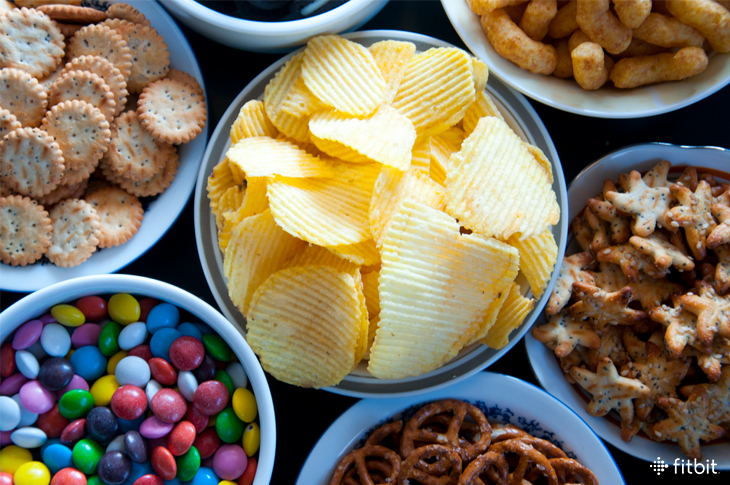
In celebration of Heart Health Month, it’s time to get smart about sodium. If you’re at risk for heart disease, your doctor may have already cautioned you to set down the shaker. But even for the young and fit, that’s still good advice. On average, Americans consume 50 percent more sodium than the dietary guidelines recommend, increasing blood pressure, making our hearts work harder, and putting us at risk for heart disease, the leading cause of death worldwide. The dietary guidelines recommend no more than 2,300 mg of sodium, about 1 teaspoon of salt, per day. The American Heart Association (AHA) is even more conservative, at 1,500 mg.
Even if you go with the more lenient guideline, that’s just 1 teaspoon of salt. For your entire day! If you’re a cook, you know how quickly that teaspoon can go. If you’re a takeout junky, you’re in for a nasty surprise. The salt you sprinkle on your food at home is likely the least of your worries—packaged, processed, and restaurant foods are the worst offenders. There are the usual salty suspects, like pickles, pretzels, and chips, but also sneaky sources, like warehouse muffins and cookies. Salt is a natural preservative, so it’s integral for any product designed to sit on a shelf for long. Plus, salt simply makes food taste good, which is why restaurants—particularly fast food chains—have such a heavy hand.
Fortunately, Fitbit Nutritionist Tracy Morris maintains that small food swaps can make a big difference. She compared two days of eating, side by side. At a glance, they look very similar, but with a few tweaks, you can dramatically lower your sodium intake.
| Instead of … | Go for … |
|
Breakfast 1 cup bran cereal* ½ cup low-fat milk 1 banana 421 mg sodium
|
Breakfast ¾ cup rolled oats cooked with 1 cup low-fat milk 1 teaspoon honey 1 banana 135 mg sodium |
|
Snack 12 fl oz regular latte Blueberry muffin* 343 mg |
Snack 12 fl oz regular latte 1 cup blueberries 120 mg |
|
Lunch Ham & cheese sandwich* 8 fl oz coconut water* 1,587 mg
|
Lunch Grilled chicken sandwich on whole-wheat bread* Garden salad with 1 Tbsp vinaigrette Water 934 mg |
|
Snack 1 oz salted pretzels* 1 oz string cheese* 507 mg |
Snack 1 cup sugar snap peas Small handful almonds (unsalted) 7 mg |
|
Dinner Beef and broccoli stir-fry in soy-based sauce* 1 cup instant rice* 1,125 mg
|
Dinner 3–4 oz grilled lean steak 1 Tbsp reduced-sodium teriyaki marinade* Sautéed broccoli & mushrooms 1 cup steamed brown rice* 673 mg |
|
Dessert 2 chocolate chip cookies 80 mg |
Dessert 1 oz dark chocolate 6 mg |
|
Equals about 4,000 mg sodium |
Equals about 2,000 mg sodium |
* contains moderate-high levels of sodium
Notice how even supposedly healthy foods, like bran cereal, coconut water, and mozzarella sticks, can hide a surprising amount of sodium. To avoid resigning yourself to a bland existence, focus on real foods and fresh flavors. For instance, instead of opening a box of cereal, make your own overnight oats. Swap ham or salami on your sandwich for a few slices of chicken or turkey. Or ditch the takeout and freezer dinners, and sear your own lean protein and veggies, with a splash of marinade or sprinkle of salt. And whatever you do, look out for those chips, pretzels, and cookies. To satisfy crunchy cravings, reach for fresh fruits and veggies and a big glass of water.

This information is for educational purposes only and is not intended as a substitute for medical diagnosis or treatment. You should not use this information to diagnose or treat a health problem or condition. Always check with your doctor before changing your diet, altering your sleep habits, taking supplements, or starting a new fitness routine.

If you have questions about a Fitbit tracker, product availability, or the status of your order, contact our Support Team or search the Fitbit Community for answers.
Please note: Comments are moderated and may not appear immediately after submission.